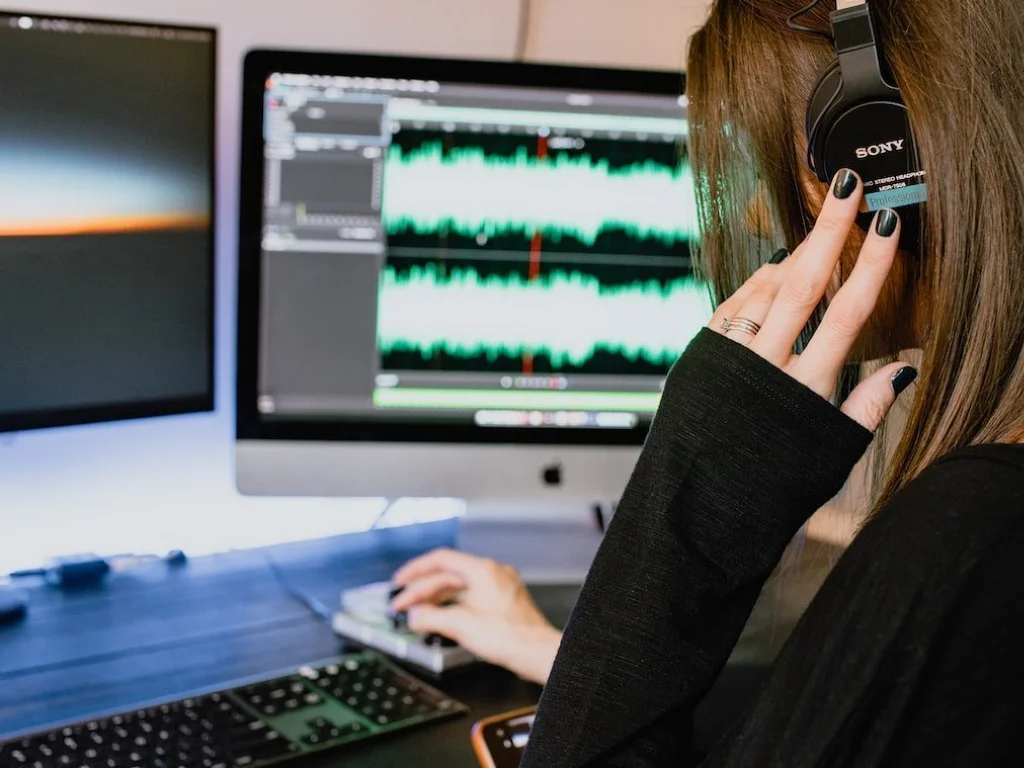Dubbing and voice-over are two essential techniques in the world of audiovisual media that contribute to creating a homogeneous and attractive experience for viewers. However, despite their similarities, the differences between these two methods can be significant. With the advent of globalization and the widespread distribution of media content worldwide, it is more important than ever to understand these differences.
Basically, dubbing is a process by which an existing audio track, usually dialogue, is replaced by a version in another language. This technique is commonly used in films and television shows where different language versions are needed for international distribution. Voice-over, on the other hand, involves replacing an existing audio track with a new track in a different language or with live translation. This technique is often used in documentaries, news reports, and educational videos. As these two techniques play an essential role in the production of quality audiovisual content, it is essential to understand the nuances that distinguish them. In this blog article, we will delve into the following points.
1. Definition of Dubbing and Voice-Over
Dubbing involves replacing the original dialogue of a video or film with a new linguistic version. This involves hiring actors to play the roles in the new language, ensuring that their lip movements match those of the original actors. The dubbed version may be intended for broadcast in another country or for viewers who prefer to watch films or shows in their own language. On the other hand, voice-over is a technique that involves adding commentary or narration to a video or film. The voice-over can be heard over the original soundtrack or in place of it, depending on the desired effect. This technique is often used to provide additional information or context to the audience, or to translate parts of the original script into another language.
2. Common Applications for Each
In the world of cinema and television, dubbing and voice-over are two similar but distinct techniques that allow content to be broadcast in different languages. While dubbing involves replacing the original audio track with a dubbed track, voice-over involves recording a vocal track over the original track that translates or explains the images presented on the screen in the desired language. Both techniques offer a wide range of applications that can be useful to filmmakers, producers, and content creators in different sectors. Common applications of dubbing include animated films, foreign films, and television shows, where emphasis is placed on conveying the emotion, tone, and overall artistic expression through the actors’ voices. On the other hand, voice-over is often used in documentaries and corporate training videos, where a narrator needs to provide additional information or explain complex concepts to the audience.
It is essential to understand the main differences between these two methods to choose the approach that best suits your objective, audience, and budget. While dubbing requires a lot of time and resources to replicate the lip movements of the original actors, voice-over is generally faster and more cost-effective to produce. By carefully examining the advantages and limitations of both techniques, you can ensure that your audio and visual elements complement each other and effectively serve the purpose you have set for yourself.
3. Distinction between dubbing and voice over techniques
Dubbing and voice over are two commonly used techniques in film-making, video production, and audiovisual media to create localized versions of content in different languages. While both techniques aim to present the original message of content in a target language without subtitles, they differ in their approach and execution. Dubbing is a technique that involves translating, adapting, recording new dialogue, and synchronizing it with the lip movements of actors on screen, completely replacing the original language. On the other hand, voice over is a technique that involves adding a new voice to the original soundtrack, translating the original dialogue without drowning out the original sound. The main difference between the two techniques is that dubbing alters the original spoken language to suit the target audience, while voice over is an added layer that coexists with the original language.
4. Main considerations in the production process
When it comes to dubbing and voice-over production, there are several key elements to consider in the production process. These include the script, casting of actors, quality of recording equipment and studio, and the post-production process. First and foremost, the script is an essential element of the production process. A well-written script that accurately reflects the original intent of the source material is crucial to ensure the effectiveness of the final product. Secondly, casting of voice actors is also crucial as it allows for emotions and character to be brought out in the final product. The quality of recording equipment and studio is equally important, as it can impact the clarity, tone, and overall quality of the recording. Finally, the post-production process is where the final touches are made to refine the synchronization, pacing, and overall quality of the dubbing or voice-over production. By paying attention to these four key considerations, you can ensure a successful and engaging final product that effectively communicates the intended message.
5. Advantages and disadvantages of each technique
When it comes to translating audiovisual content, two techniques are commonly used: dubbing and voice over. Both methods have their advantages and disadvantages, and the choice of the right method depends on several factors such as budget, target audience, and other personal preferences.
The main advantage of dubbing is that it allows the audience to fully immerse themselves in the story as if it was originally produced in their language. Dubbing preserves the original voice performances and tone, making it a preferred method for films, TV shows, and animated movies. However, dubbing can be costly and time-consuming as it requires hiring professional actors, studio recording, and synchronizing the dubbed dialogues with the lip movements of characters on screen.
On the other hand, voice-over involves using a single actor to narrate the translated text over the original sound. This method is more cost-effective and quicker than dubbing, making it a popular choice for documentaries, educational films, and corporate videos. Voice-over also offers greater flexibility in terms of adapting the tone and pacing of narration to visual elements. However, the disadvantage of voice-over is that it can alter the original performances and emotions, making it less suitable for dramatic or comedic content.
In conclusion, the main difference between dubbing and voice-over is that the former replaces the original dialogue with a new audio track in a different language, while the latter is closer to translation, adding a new audio track to the original sound. While both methods can be used for similar purposes, such as making films and TV shows more accessible to audiences of different languages, understanding the distinctions between dubbing and voice-over can help you determine the best option for your project.

